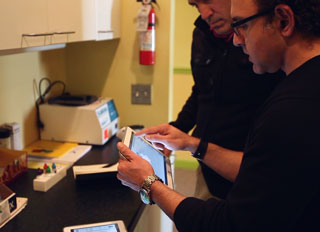 To combat the rising costs of bringing a new drug to market, pharmaceutical companies have taken a variety of innovative approaches, according to the U.K. Office of Health Economics.1 They include deciding earlier in the R&D process to discontinue drugs lacking strong market prospects, better controlling clinical costs, outsourcing or conducting trials in lower-cost areas, and entering into collaborations with both public and private entities.
To combat the rising costs of bringing a new drug to market, pharmaceutical companies have taken a variety of innovative approaches, according to the U.K. Office of Health Economics.1 They include deciding earlier in the R&D process to discontinue drugs lacking strong market prospects, better controlling clinical costs, outsourcing or conducting trials in lower-cost areas, and entering into collaborations with both public and private entities. In Part 2 of this two-part article, we highlight some of the innovations that are cutting costs and timeframes.
Real-time data management and collaboration
Around the world, many scientists working in life sciences labs still rely on stand-alone computers, outdated software and paper documentation. When R&D personnel are working with a jumble of computers, programs and lab notebooks, work is not tracked uniformly, productivity suffers, costs rise and time-to-market increases.
One of the innovations helping to cap runaway pharma spending is the development of collaboration tools that can manage, capture and share assay data in real-time. For example, scientists at Label Independent have developed a tablet-based collaboration tool with three different platforms that cover all the bases:
- A light-weight tablet that lets researchers tap on an icon-based touch-screen to capture assay design and results and instantly share that information with collaborators onsite and around the world
- A server-level administration tool for IT departments supporting life sciences and pharma operations that enables IT to instantly administer additional users in a bring-your-own-device environment, allowing complete control over data and security policies
- A software management tool that allows team leaders and managers to instantly track the progress of all assays in real-time without the need to disrupt the scientists doing the work
According to Mannix Aklian, Founder and CEO of Label Independent, customers are saying that data capture and collaboration “should have been like this from day one. Why didn’t we get this 15 or 20 years ago?”
The high tech of high-risk decisions
Pharma and biotech manufacturers also need a better way to handle high-risk decisions. One approach is to take the guesswork out of critical enterprise planning, financial, IT and performance-related decisions by replacing unstructured, freewheeling debates with a systematic process that drives consensus among stakeholders and ensures transparency.
“The old way of holding quarterly meetings to make decisions no longer works, because information can change on a weekly basis,” said Kevin Connor, chief product officer, Decision Lens, a leading provider of prioritization software solutions. The use of technology, he said, has generated a mountain of data, and sifting through that information to find what’s important is critical to the decision-making process.
To address this challenge, Decision Lens desktop and Web-based software platforms analyze which compounds and indications to pursue, plan clinical trials to yield the most conclusive evidence on safety and efficacy, select the right contract research organization to conduct trials and redefine entire corporate strategies to navigate the new competitive landscape.
“What we tend to hear from our customers (who use this software) is that there is a greater efficiency and clearer understanding of what the tradeoffs are and how different opportunities align to their strategies,” said Connor. “They also find that they have a better ability, on an apples-to-apples basis, to compare opportunities.”
Global trial design and monitoring
Better control of clinical costs is yet another unmet need being addressed by today’s innovators. At one such innovator, reinventing the clinical trial takes center stage.
“We see ourselves as a partner to our pharmaceutical customers in delivering optimized clinical trials,” said Martin Giblin, vice president of Global Data and Safety Monitoring, Quintiles, a prominent provider of biopharmaceutical development and commercial outsourcing services.
Giblin said that using a global technology infrastructure, his company is conducting seamless global operations, linking regions that are less expensive to do business in, such as India and South Africa, with those regions where their customers reside and many of their patients and sites are located. Quintiles technology platform allows all patient trial data, regardless of source, to be combined into one system for real-time analysis on a global scale.
“Information we get allows us to deploy our resources to the sites where there may be an issue that needs attention,” Giblin said. For instance, if the data show that the early results in patients at one site seem to be off the scale compared to patients elsewhere, Quintiles staff may call that site to check the understanding of protocol, including inclusion and exclusion parameters. If there’s no need to visit a site, that is noted as well. Both scenarios can offer customers huge savings.
According to Giblin, drugmakers “can significantly benefit from a thoughtful, deliberate reconstruction of the way that trials are done. And the technology infrastructure and globalization offers a real chance to do that. Ultimately, that benefits patients, and in the end, those patients are our families and ourselves.”
Well said.
Reference
1. Levine DS. New estimate of drug development costs pegs total at $1.5 billion. The Burrill Report. December 7, 2012.
Filed Under: Drug Discovery



